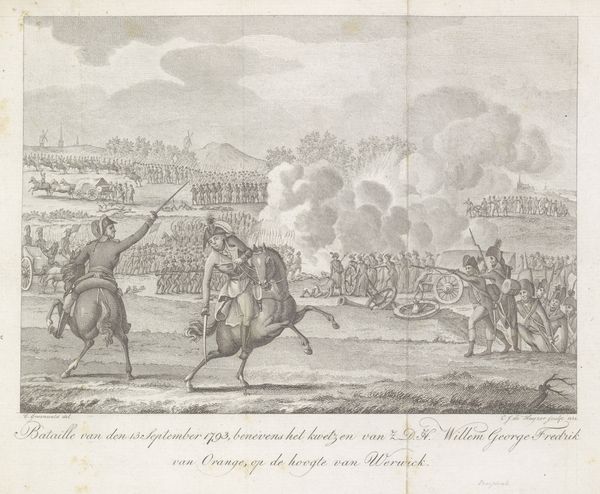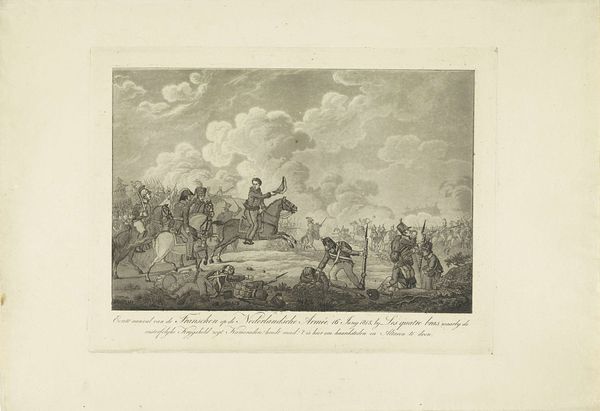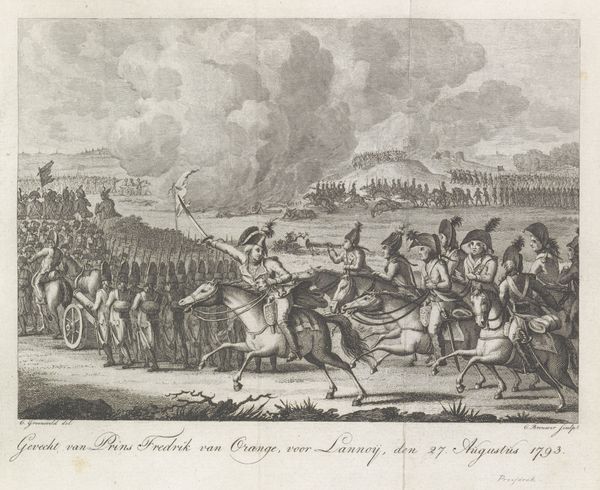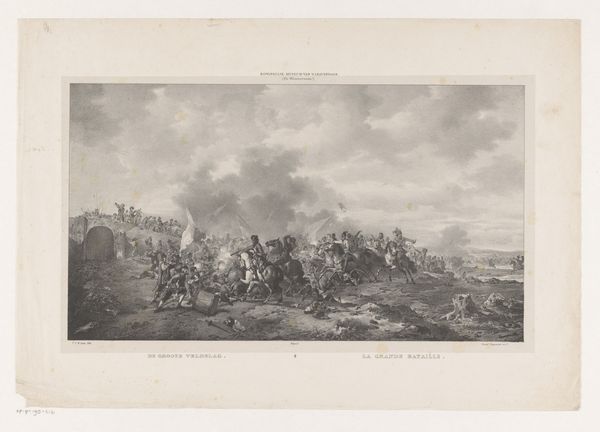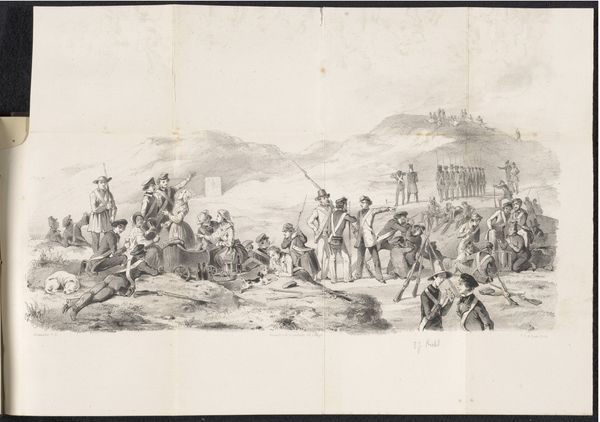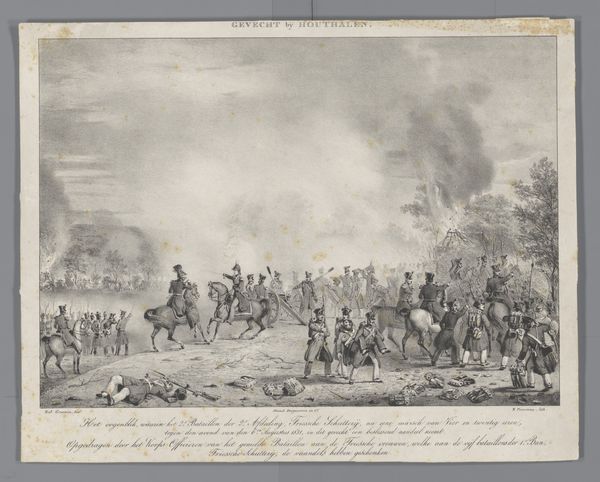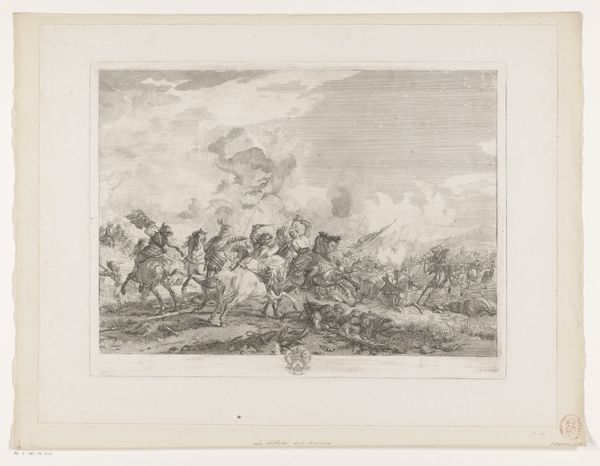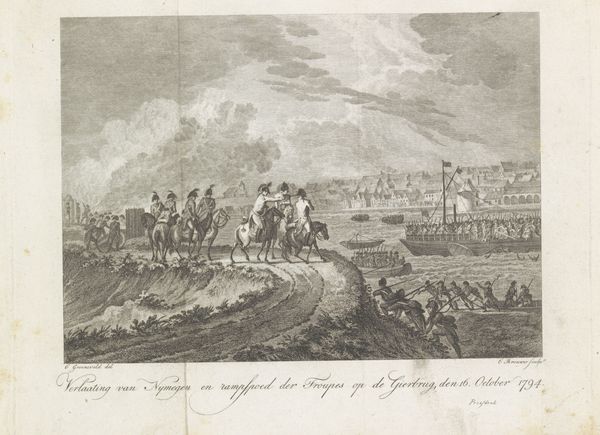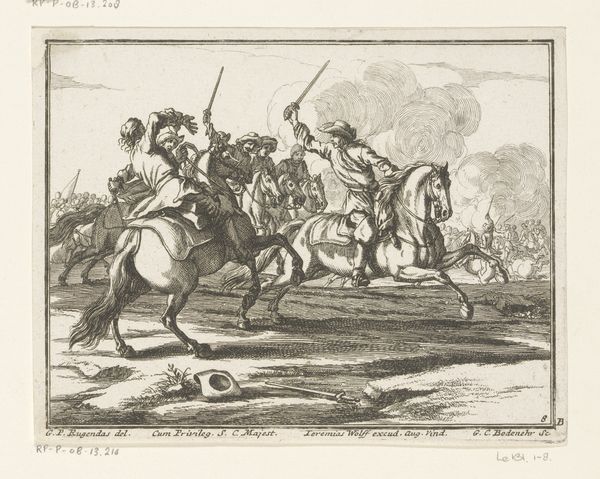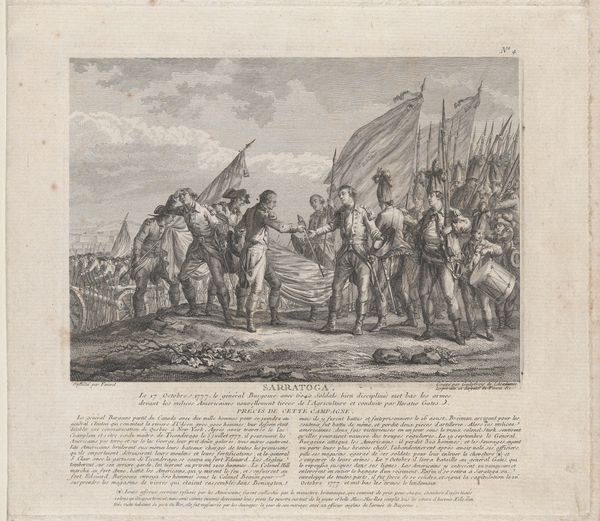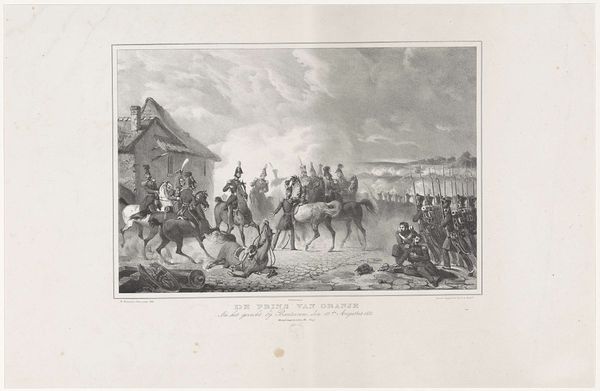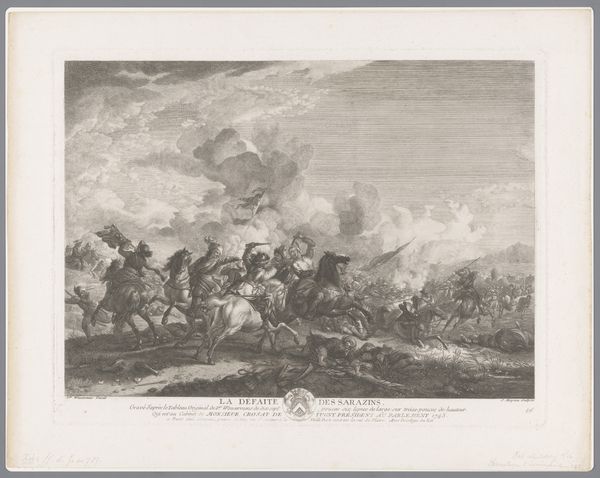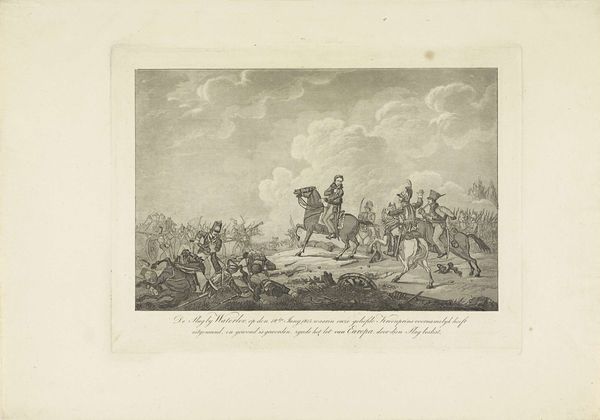
drawing, print, engraving
#
drawing
# print
#
landscape
#
coloured pencil
#
romanticism
#
history-painting
#
engraving
Dimensions: height 220 mm, width 318 mm
Copyright: Rijks Museum: Open Domain
Carel Jacob de Huyser made this print of a skirmish near Ginneken in 1793. Its monochrome aesthetic results from etching, a printmaking process that uses acid to corrode the unprotected parts of a metal surface to create a design in the metal. Etching allowed de Huyser to produce many copies of his image. The labor is displaced. Instead of a unique, hand-crafted artwork, etching allowed for the mass production of images. This reflects a shift towards a more industrialized mode of art production, mirroring the societal changes occurring during this period. It's a process of mechanical reproduction – in which the hand of the artist still played a role, but one that was geared toward replication and distribution. Understanding de Huyser's print through its materials and making processes reveals a deeper connection to the social and economic context of the late 18th century. It prompts us to consider the role of art in reflecting and shaping society.
Comments
No comments
Be the first to comment and join the conversation on the ultimate creative platform.
